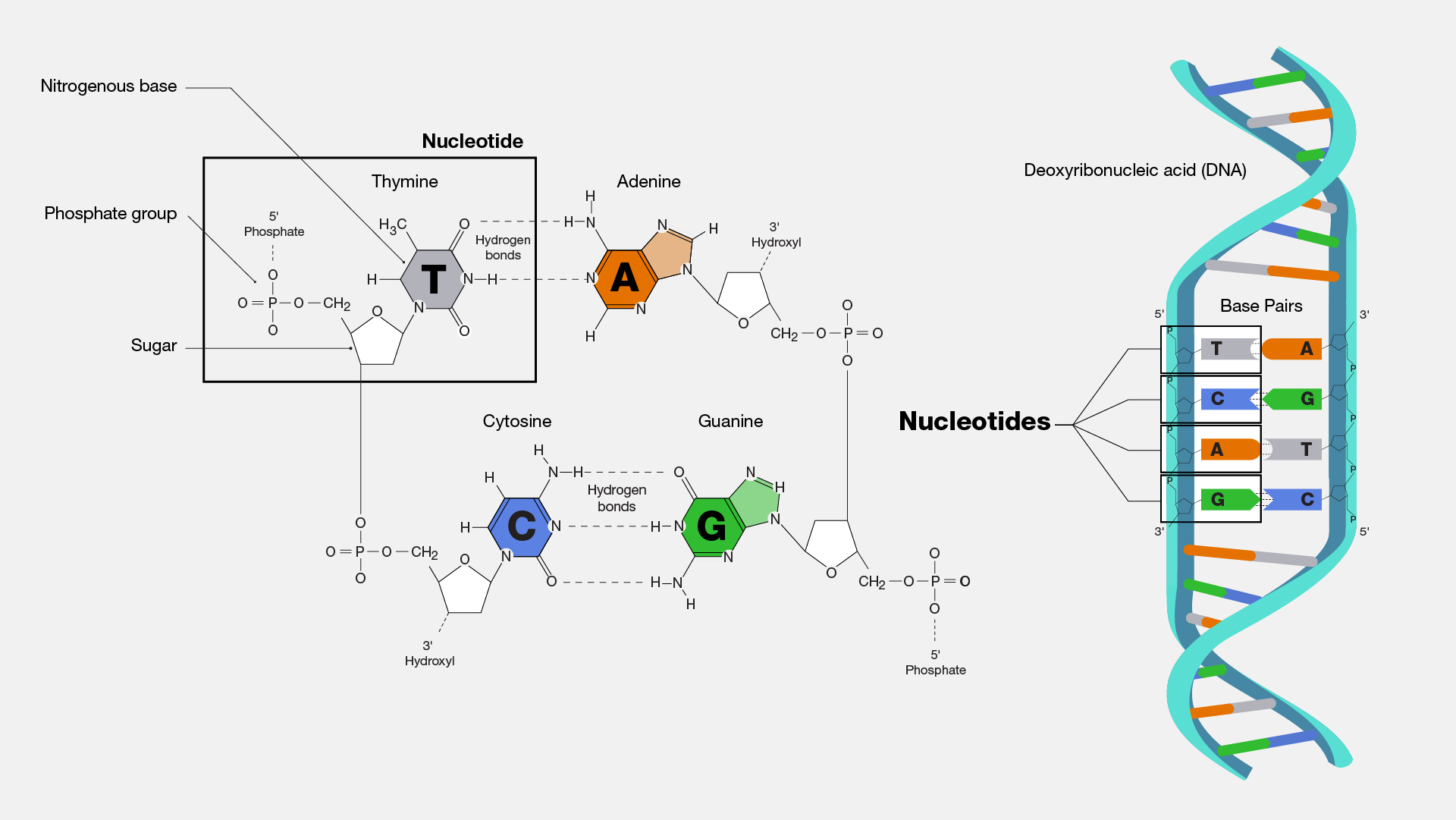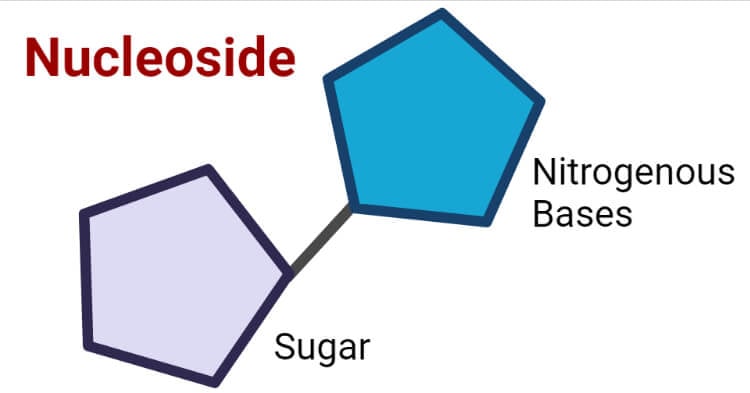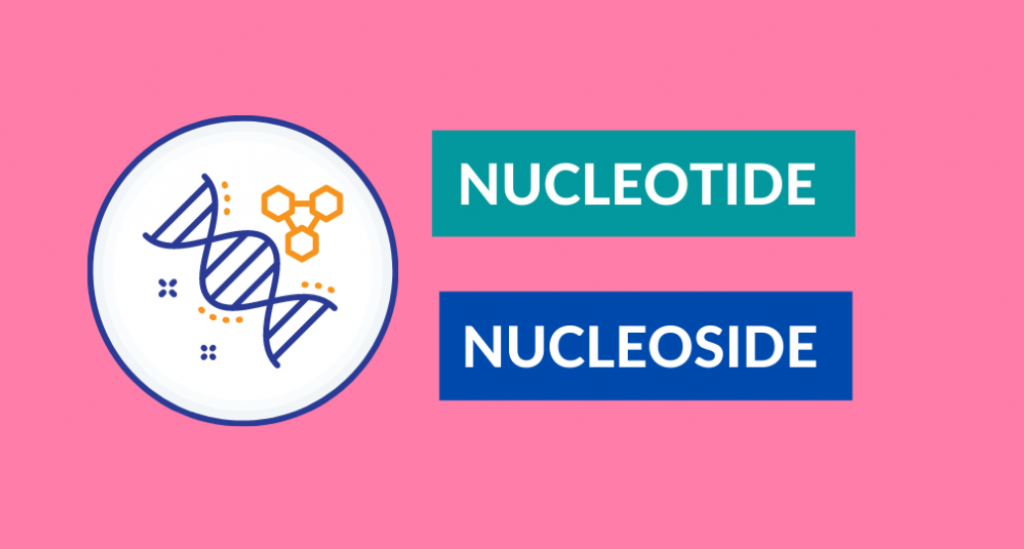In the world of biochemistry, nucleotides and nucleosides play crucial roles as fundamental building blocks of nucleic acids. These compounds are essential for the storage and transmission of genetic information. While nucleotides and nucleosides may sound similar, they have distinct differences in their molecular composition. Understanding these differences is essential for comprehending the intricate workings of DNA and RNA.
In this comprehensive guide, we will explore the characteristics, structures, and types of nucleotides and nucleosides. We will delve into the key differences between these two compounds and examine their functional roles in organic chemistry and biology. By the end of this article, you will have a solid understanding of nucleotide and nucleoside and how they contribute to the intricate machinery of life.
What is Nucleotide?
A nucleotide is an organic molecule that serves as the building block of RNA and DNA. It consists of three essential components – a nitrogenous base, a sugar molecule (ribose or deoxyribose), and one to three phosphate groups. These components are linked together through covalent bonds to form the structure of a nucleotide.
The nitrogenous base is a crucial part of the nucleotide and can be either a purine (adenine or guanine) or a pyrimidine (cytosine, thymine, or uracil). The sugar molecule, either ribose or deoxyribose, provides the backbone of the nucleotide. The phosphate groups, if present, add additional functional groups to the nucleotide.
The combination of these components gives nucleotides their unique properties and allows them to participate in various biological processes. Nucleotides are not only the building blocks of DNA and RNA but also serve as energy carriers, signaling molecules, and enzymatic cofactors.

What is Nucleoside?
A nucleoside, on the other hand, is a simpler compound compared to a nucleotide. It consists of a nitrogenous base covalently attached to a sugar molecule (ribose or deoxyribose) but lacks the phosphate group found in nucleotides. In other words, a nucleoside is a nucleotide without the phosphate group.
Nucleosides are named based on the nitrogenous base they contain. For example, adenosine is a nucleoside that contains the nitrogenous base adenine. Similarly, guanosine, cytidine, uridine, and thymidine are nucleosides that contain the bases guanine, cytosine, uracil, and thymine, respectively.
Unlike nucleotides, nucleosides do not have the same level of biological activity. However, they still play important roles in various physiological processes. Nucleosides can act as signaling molecules, regulate cellular processes, and serve as substrates for the synthesis of nucleotides.

Difference Between Nucleotide and Nucleoside
While nucleotides and nucleosides share some similarities, they also have distinct differences in their molecular composition and biological functions. The primary difference lies in the presence or absence of the phosphate group.
| Parameter | Nucleotide | Nucleoside |
| Structure | It consists of a nitrogenous base, one to three phosphate groups, and sugar-like deoxyribose and ribose | It consists of a nitrogenous base that has an attachment to sugar in a covalent manner without the phosphate group |
| Medical Relevance | Nucleotides that are dysfunctional lead to the onset of cancer due to the accumulation of damaged DNA | Use of several nucleoside analogues takes place in medicine as anticancer agents or antiviral |
| Composition | It consists of nucleoside in addition to one or more phosphate groups | It consists of a nitrogenous base in addition to Pentose sugar |
| Role in Nucleic Acids | It makes covalent bonds with other nucleotides to result in the formation of nucleic acid strand | It undergoes phosphorylation to result in the formation of nucleotides |
| Examples | Uridine monophosphate, guanosine monophosphate, cytidine monophosphate, adenosine monophosphate, thymidine monophosphate | Uridine, guanosine, cytidine, adenosine, thymidine |
These differences in composition and function make nucleotides and nucleosides distinct entities in the realm of biochemistry. Nucleotides are more versatile and have a wide range of biological activities, while nucleosides primarily serve as building blocks and signaling molecules.
Types of Nucleotides
Nucleotides can be classified based on the type of nitrogenous base they contain. There are two categories of nitrogenous bases: purines and pyrimidines. Purine bases include adenine and guanine, while pyrimidine bases include cytosine, thymine, and uracil.

Let’s take a closer look at the different types of nucleotides based on their nitrogenous bases:
Adenine
Adenine is a purine base that forms part of the nucleotides involved in DNA and RNA synthesis. Adenine nucleotides, such as adenosine triphosphate (ATP) and adenosine monophosphate (AMP), play crucial roles in energy transfer and cellular metabolism. ATP, in particular, serves as the primary energy carrier in cells.
Guanine
Guanine is another purine base found in nucleotides. It pairs with cytosine in DNA and RNA through hydrogen bonding. Guanine nucleotides, such as guanosine triphosphate (GTP) and guanosine monophosphate (GMP), participate in various cellular processes, including protein synthesis and cell signaling.
Cytosine
Cytosine is a pyrimidine base that pairs with guanine in DNA and RNA. It is an essential component of cytidine triphosphate (CTP) and cytidine monophosphate (CMP), which function as building blocks in nucleic acid synthesis. Cytosine nucleotides also play a role in cellular communication and signaling.
Thymine
Thymine is a pyrimidine base that is exclusive to DNA. It pairs with adenine through hydrogen bonding, forming one of the base pairs in the DNA double helix structure. Thymine nucleotides, such as thymidine monophosphate (TMP), are critical for DNA replication and maintenance.
Uracil
Uracil is another pyrimidine base, but it is found in RNA instead of DNA. It pairs with adenine in RNA through hydrogen bonding. Uracil nucleotides, such as uridine monophosphate (UMP), are involved in various RNA-related processes, including transcription and translation.
Types of Nucleosides
Nucleosides are named based on the nitrogenous base they contain, similar to nucleotides. Let’s explore the different types of nucleosides:

Adenosine
Adenosine is a nucleoside that contains the nitrogenous base adenine. It consists of adenine covalently attached to a ribose sugar molecule. Adenosine plays various roles in cellular processes, including energy transfer (as part of ATP) and cell signaling (as part of cyclic AMP).
Guanosine
Guanosine is a nucleoside that contains the nitrogenous base guanine. It consists of guanine covalently attached to a ribose sugar molecule. Guanosine is involved in cellular processes such as protein synthesis, RNA capping, and cell signaling.
Cytidine
Cytidine is a nucleoside that contains the nitrogenous base cytosine. It consists of cytosine covalently attached to a ribose sugar molecule. Cytidine participates in nucleic acid synthesis and serves as a precursor for the synthesis of other nucleotides.
Uridine
Uridine is a nucleoside that contains the nitrogenous base uracil. It consists of uracil covalently attached to a ribose sugar molecule. Uridine is an essential component of RNA and is involved in processes such as transcription, translation, and RNA modification.
Structure of Nucleotide and Nucleoside
The structure of nucleotides and nucleosides is key to understanding their functions and properties. Let’s take a closer look at the structure of nucleotides and nucleosides:
Nucleotide Structure
A nucleotide consists of three main components: a nitrogenous base, a sugar molecule, and one to three phosphate groups. The nitrogenous base can be either a purine or a pyrimidine, and it is attached to the 1′ carbon of the sugar molecule. The sugar molecule, either ribose or deoxyribose, is a five-carbon sugar that forms the backbone of the nucleotide. The phosphate groups, if present, are attached to the 5′ carbon of the sugar molecule.
Nucleoside Structure
A nucleoside, in contrast, lacks the phosphate group found in nucleotides. It consists of a nitrogenous base covalently attached to a sugar molecule. The nitrogenous base is attached to the 1′ carbon of the sugar molecule, forming a glycosidic bond. The sugar molecule can be either ribose or deoxyribose.
Nucleoside-Nucleotide Bonding
The relationship between nucleosides and nucleotides is crucial for the formation and function of nucleic acids. Nucleotides are formed by the addition of phosphate groups to nucleosides through a process called phosphorylation. This reaction is catalyzed by specific enzymes known as kinases.
Phosphorylation of nucleosides results in the formation of nucleotides, with the phosphate group attached to the 5′ carbon of the sugar molecule. The addition of the phosphate group creates a high-energy bond, which is essential for the energy transfer and signaling functions of nucleotides.
The formation of nucleotides from nucleosides is a key step in the synthesis of DNA and RNA. The nucleotides then join together through phosphodiester bonds to form the backbone of the nucleic acid chain.
Functional Role of Nucleosides in Organic Chemistry
While nucleotides have diverse biological functions, nucleosides also play important roles in organic chemistry. Nucleosides can serve as substrates for enzymatic reactions, acting as donors or acceptors of functional groups.
In addition, nucleosides can be modified to create nucleoside analogs. These analogs are structurally similar to natural nucleosides but contain modified functional groups. Nucleoside analogs have unique properties that make them useful in various applications, including as antiviral and anticancer agents.
Nucleoside analogs can interfere with viral replication by inhibiting the activity of viral enzymes. For example, nucleoside reverse transcriptase inhibitors (NRTIs) are a class of antiviral drugs that target the reverse transcriptase enzyme in retroviruses, such as HIV. These drugs mimic the structure of natural nucleosides and can be incorporated into the growing viral DNA chain, causing premature termination of viral replication.
Biological Concepts: Importance of Nucleoside and Nucleotide
Nucleosides and nucleotides are essential for the proper functioning of living organisms. They play critical roles in various biological processes, including:
- Genetic Information Storage: Nucleotides are the building blocks of DNA and RNA, the genetic material of all living organisms. The sequence of nucleotides in DNA and RNA encodes the instructions for protein synthesis and other cellular processes.
- Energy Transfer: Nucleotides such as ATP and GTP serve as energy carriers in cells. They store and release energy during metabolic reactions, providing the necessary fuel for cellular processes.
- Cellular Signaling: Nucleotides and nucleosides act as signaling molecules in intercellular communication. For example, cyclic AMP (cAMP) is a nucleotide derivative that functions as a second messenger, relaying signals from hormones and neurotransmitters to intracellular targets.
- Enzymatic Reactions: Nucleotides can act as cofactors for enzymes, assisting in catalytic reactions. They can participate in coenzyme catalysis, where they transfer functional groups between molecules.
These biological functions highlight the importance of nucleosides and nucleotides in maintaining the integrity and functionality of cells and organisms.
Synthesis of Nucleosides and Nucleotides
Nucleosides and nucleotides are synthesized through complex biochemical pathways in cells. The synthesis of nucleotides involves the stepwise addition of phosphate groups to nucleosides, catalyzed by various enzymes.
The de novo synthesis of nucleotides starts with the formation of the sugar-phosphate backbone, followed by the addition of nitrogenous bases. This process requires energy in the form of ATP and specific enzymes to facilitate the reactions.
Alternatively, cells can salvage nucleotides by recycling them from degraded DNA and RNA molecules. The salvage pathway allows cells to conserve energy by reusing existing nucleotides instead of synthesizing them de novo.
The synthesis of nucleosides and nucleotides is tightly regulated to maintain the balance between nucleotide pools and cellular needs. Imbalances in nucleotide synthesis can lead to genetic instability, cell cycle defects, and diseases such as cancer.
Solved Examples on Nucleotide vs. Nucleoside
To solidify your understanding of nucleotides and nucleosides, let’s solve a few examples that highlight the key differences between these two compounds:
Example 1: Identify the Components
Identify the components of a nucleotide and a nucleoside.
Solution:
A nucleotide consists of three components: a nitrogenous base, a sugar molecule (ribose or deoxyribose), and one to three phosphate groups. In contrast, a nucleoside consists of a nitrogenous base covalently attached to a sugar molecule, but it lacks the phosphate group.
Example 2: Differentiate Based on Structure
Differentiate between a nucleotide and a nucleoside based on their structures.
Solution:
A nucleotide has a more complex structure compared to a nucleoside. It consists of a nitrogenous base, a sugar molecule, and one to three phosphate groups. The nitrogenous base is attached to the 1′ carbon of the sugar molecule, and the phosphate groups are attached to the 5′ carbon.
In contrast, a nucleoside has a simpler structure. It consists of a nitrogenous base covalently attached to a sugar molecule, typically ribose or deoxyribose. The nucleoside lacks the phosphate group found in nucleotides.
How Kunduz Can Help You Learn Nucleotide vs. Nucleoside?
At Kunduz, we understand the importance of a strong foundation in biochemistry. Our comprehensive learning resources and expert tutors are here to assist you in mastering the concepts of nucleotides and nucleosides. Whether you need help with understanding their structures, functions, or their roles in DNA and RNA, Kunduz is your trusted companion on your learning journey.
Our personalized approach ensures that you receive tailored guidance and support to meet your specific learning needs. With our interactive lessons, step-by-step explanations, and practice problems, you’ll gain the confidence and knowledge necessary to excel in your biochemistry studies.
Don’t let the complexities of nucleotides and nucleosides hold you back. Join Kunduz today and unlock your full potential in understanding these fundamental building blocks of life.
